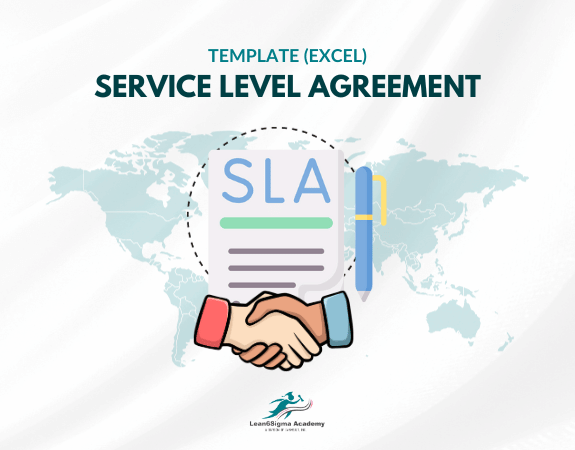Service Level Agreement Template
Formal agreements between external customers
Understand expectations.
Quality Assurance
Formal agreements between internal customers
Set the pace, tone and direction!
Put rules in place and enforce them through examples and data!
Customer Service - both Internal and External!
Here are common components typically found in an SLA template:
Introduction:
Parties: Identify the parties involved in the agreement, including the service provider and the client or customer.
Effective Date: Specify the date when the SLA becomes effective.
Purpose: Define the purpose and objectives of the SLA, including the services or products covered and the overall goal of the agreement.
Service Description: Provide a detailed description of the services or products to be delivered, including any service levels, specifications, or standards. Define any service variations or tiers if applicable.
Service Levels and Metrics: Outline the specific performance metrics, service levels, and key performance indicators (KPIs) that will be used to measure service quality. Specify the target values or benchmarks for each metric. Define the frequency and method of measuring and reporting performance.
Responsibilities: Clearly delineate the responsibilities of both the service provider and the client. This includes who is responsible for what aspects of service delivery. Specify any third-party vendors or subcontractors involved in service delivery.
Service Availability: Describe the expected availability of the service, including uptime and downtime allowances.
Specify maintenance windows or planned outages, if applicable.
Response and Resolution Times: Define the expected response times (acknowledgment of an issue) and resolution times
(time to resolve an issue) for different types of service requests or incidents.
Specify priority levels for different types of issues.
Escalation Procedures: Outline the escalation process to be followed in the event that service issues are not resolved within specified timeframes. Identify the points of contact for escalation.
Service Reporting: Detail how performance reports will be generated, delivered, and reviewed by both parties.
Specify the frequency of reporting (e.g., monthly, quarterly) and the content of reports.
Change Management: Describe how changes to the SLA or service scope will be managed and communicated.
Define the change request process.
Billing and Payment: Address the billing cycle, payment terms, and any penalties or discounts related to service performance. Specify invoicing and payment methods.
Dispute Resolution: Outline procedures for resolving disputes related to the SLA, including how disagreements will be escalated and resolved.
Termination and Exit Strategy: Describe the conditions under which the agreement can be terminated by either party.
Specify any transition or exit processes, data handover, or continuity planning.
Confidentiality and Data Security: Address confidentiality and data protection requirements, especially if sensitive information is involved.
Governing Law and Jurisdiction: Specify the governing law under which the SLA will be interpreted and enforced.
Identify the jurisdiction for legal matters.
Signatures: Provide spaces for authorized representatives from both parties to sign and date the agreement, indicating their acceptance and commitment to the terms.
SLA Templates provide a structured framework for service providers and clients to establish clear expectations, promote accountability, and ensure the quality and reliability of services. While templates offer a standard structure, they can be customized to suit the specific needs and requirements of the parties involved.

0 Reviews
Riaan is a dynamic leader, coach, facilitator, Lean Six Sigma Master Black Belt with over 20 years of hands-on experience driving business results. Riaan is highly skilled and has worked across diverse industries internationally. With a degree in Chemical Engineering, Riaan started in the major breweries and bakeries in South Africa and was so dedicated to his work that he was often known to take his work home with him.
